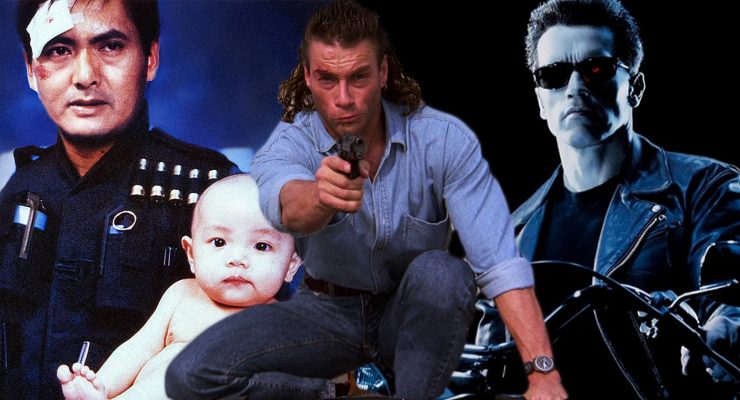The Cured, 2018.
Directed by David Freyne.
Starring Ellen Page, Sam Keeley, Tom Vaughan-Lawlor, Stuart Graham, Hilda Fay, and Paula Malcolmson.
SYNOPSIS:
A disease that turns people into zombies has been cured. The once-infected zombies are discriminated against by society and their own families, which causes social issues to arise. This leads to militant government interference.
David Freyne’s The Cured probes territories that run-of-the-mill zombie flicks quite frequently ignore – what happens *after* outbreaks are “contained.” Ravenous undead hungers are put on hold while Irish government agencies assimilate no-longer-infected zeds back into society. Monsters who’ve kicked their habits and expect life to move on, now marked with a scarlet “Z.” Acceptance, guilt, and fear-mongering are just some of the political/terroristic themes that Freyne chooses to expose, because genre content isn’t just about gratuitous carnage – wait, what’s that? The entire third act is just a 28 Days Later riff?
Let me rephrase.
Genre content isn’t ALWAYS about gratuitous carnage.
Carry on.
Sam Keeley stars as Senan, one of the lucky “Cured” who’s released back into civilization after the Maze Virus strikes typical zombie havoc. Survivors don’t exactly welcome undead converts with open arms, but that doesn’t stop Senan’s sister-in-law Abbie (Ellen Page) from welcoming him home. Senan gets a job working with Dr. Lyons (Paula Malcolmson) curing the 25% who remain zombified, while friends – Conor specifically (Tom Vaughan-Lawlor) – bear the disrespected brunt of a high-ranking military probation officer named Cantor (Stuart Graham) who aims to keep “Cured” ranks in check. Tension boil, factions break, and Conor plans an uprising – one that Ireland isn’t ready for. Again.
Upon introductory storytelling, The Cured healthily beguiles. Not only must we comprehend a reality where zombies assume their human forms once again – the Maze Virus acting like chicken pox, once you contract it you’re immune forever – but there’s something far darker. Senan and Conor, as they say their goodbye-for-nows, struggle with the memories of their zombie lives. Every rip of flesh, vicious bite, discarded snack. Freyne’s “living” wrestle with nightmarish recounts of their uninhibited atrocities, force to relieve actions that were committed while in – for lack of a better term – a zombified “Sunken Place.” Still conscious and cognizant, but helplessly unable to fight suppressing urges. Forced to watch.

This curiosity – while without limb-tearing gratification – rewrites dusty horror ideologies with immediate human relevance. Zombies painted as a conveyance of moral treatment debates, not rotting carcases. Threatened governments underfund preventative research in favor of “Elimination” protocols. The furious, panicked non-infected protest and reject a hopeful idea that evils can be reformed. Wives and children are forced to face down remorseful, haunted “victims” who – out of all control – stole their husband/father. Freyne’s apocalyptic rebuilding resembles that of corrupt regimes and societal unrest present in modern-day climates in helplessly destitute regions, only to spotlight – for the billionth time – how horror opens heavy doors in the name of commentary. Enraged or subtle.
While Keeley’s guilt-soaked “convert” screams nightly gasps for help, it’s Page’s performance I’m left remembering. A single mother whose husband passed during the outbreak chaos, still empathetic towards Senan’s unique condition. He’s family – her only remaining family – but Senan harbors a much graver secret that eventually sneaks out across a dinner table, Page’s Abbie slamming on a wooden slab whilst overcome with anger and betrayal. It’s a moment that so encapsulates everyone’s scripted head-on collision: Senan’s inability to cope with actions he still holds himself accountable for, Abbie’s sympathetic desires, Conor’s shove after being pushed. The Cured is a statement of oppression and totalitarian backlash – far more involved than most zombie films are willing to even suggest.
Yet, we still reach a third act where “Cured” (see: lower-class) savages fight back after being stripped of personal worth. Dr. Lyons’ facility contains the 25% of zombies who remain unsaved and yes, they’re all set free. Running amok as civilians dodge diving creatures by running through smoking, abandoned car wrecks. Freyne is so careful to navigate rarely-before-seen genre subversions only to end on the same corpse-munching note as so many “runner” flicks of midnight’s past (fast zombies, y’all). The representations of Conor’s evil genius lacking poignancy as he waltzes by deathscapes in the name of retaliation – but it’s all just so, expected? Hungry “prisoners” lash out against their captors, bites landed to maximize drama (predictable to a fault). Scents of freshness gone putrid over time.

The Cured accelerates conversations around horror films being the loudest megaphone for the masses (a mirror to society) but isn’t all that interesting as a pure zombie movie. “Infected” makeup is plainly grey-skin-and-blue-veins and survival decisions opt for tragedy over quick thinking. David Freyne creates something so genuinely provocative that‘s not tarnished nearly enough to dismiss, but an open-ended, self-serving finale fails to capitalize on bigger conversations initiated in earlier views of persecution. Inquisitive, symbolic and almost consistent throughout – shades of something greater stuck in a medium place of pretty ok-ish subgenre normalities.
Flickering Myth Rating – Film: ★★★ / Movie: ★★★
Feel free to follow Matt Donato on Twitter (@DoNatoBomb) – if you dare.












